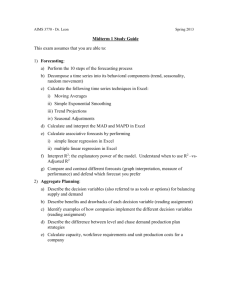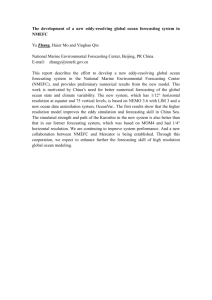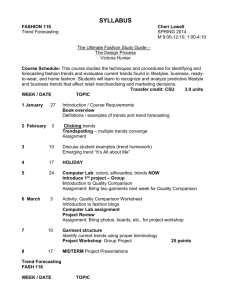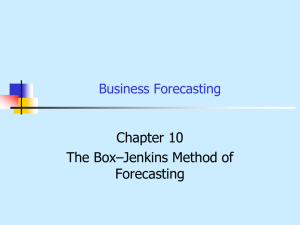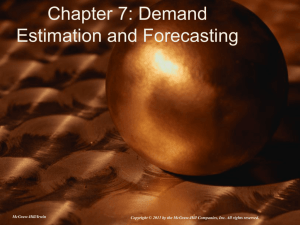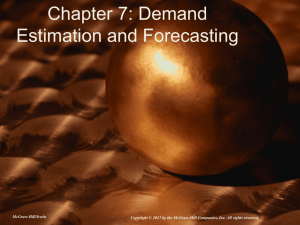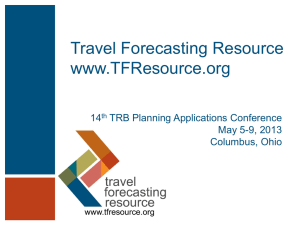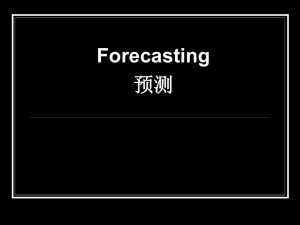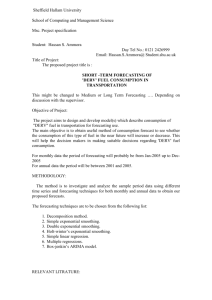Forecasting Approaches
advertisement
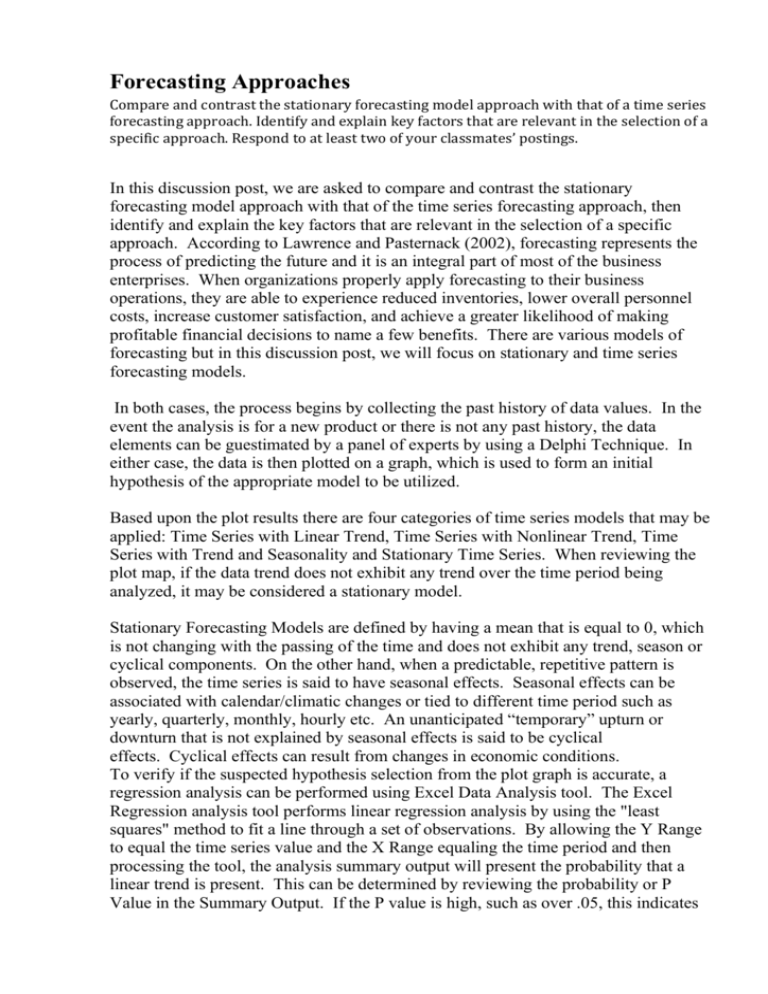
Forecasting Approaches Compare and contrast the stationary forecasting model approach with that of a time series forecasting approach. Identify and explain key factors that are relevant in the selection of a specific approach. Respond to at least two of your classmates’ postings. In this discussion post, we are asked to compare and contrast the stationary forecasting model approach with that of the time series forecasting approach, then identify and explain the key factors that are relevant in the selection of a specific approach. According to Lawrence and Pasternack (2002), forecasting represents the process of predicting the future and it is an integral part of most of the business enterprises. When organizations properly apply forecasting to their business operations, they are able to experience reduced inventories, lower overall personnel costs, increase customer satisfaction, and achieve a greater likelihood of making profitable financial decisions to name a few benefits. There are various models of forecasting but in this discussion post, we will focus on stationary and time series forecasting models. In both cases, the process begins by collecting the past history of data values. In the event the analysis is for a new product or there is not any past history, the data elements can be guestimated by a panel of experts by using a Delphi Technique. In either case, the data is then plotted on a graph, which is used to form an initial hypothesis of the appropriate model to be utilized. Based upon the plot results there are four categories of time series models that may be applied: Time Series with Linear Trend, Time Series with Nonlinear Trend, Time Series with Trend and Seasonality and Stationary Time Series. When reviewing the plot map, if the data trend does not exhibit any trend over the time period being analyzed, it may be considered a stationary model. Stationary Forecasting Models are defined by having a mean that is equal to 0, which is not changing with the passing of the time and does not exhibit any trend, season or cyclical components. On the other hand, when a predictable, repetitive pattern is observed, the time series is said to have seasonal effects. Seasonal effects can be associated with calendar/climatic changes or tied to different time period such as yearly, quarterly, monthly, hourly etc. An unanticipated “temporary” upturn or downturn that is not explained by seasonal effects is said to be cyclical effects. Cyclical effects can result from changes in economic conditions. To verify if the suspected hypothesis selection from the plot graph is accurate, a regression analysis can be performed using Excel Data Analysis tool. The Excel Regression analysis tool performs linear regression analysis by using the "least squares" method to fit a line through a set of observations. By allowing the Y Range to equal the time series value and the X Range equaling the time period and then processing the tool, the analysis summary output will present the probability that a linear trend is present. This can be determined by reviewing the probability or P Value in the Summary Output. If the P value is high, such as over .05, this indicates there is little evidence that linear trends exist and the data is indicative of a stationary model. Once a modeling hypotheses is validated, in both cases the analyst will then proceed to prepare a forecast using the applicable model selected.. Reference Lawrence, J., & Pasternack, B. (2002). Applied Management science: Modeling, Spreadsheet Analysis, and Communication for Decision Making (2nd ed.) [with accompanying CD-ROM]. Hoboken, NJ: John Wiley & Sons, Inc



